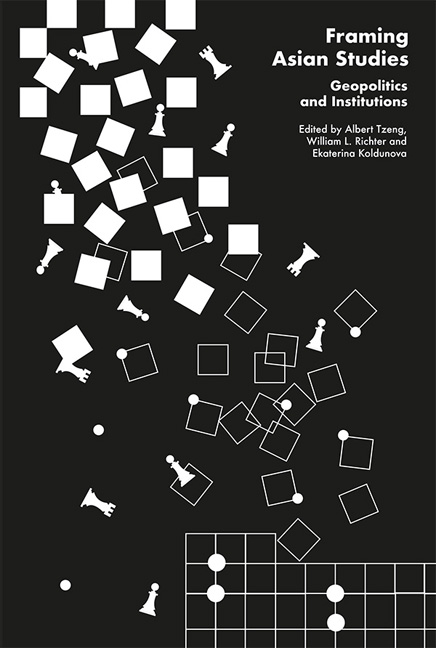Book contents
- Frontmatter
- Contents
- Foreword
- The Contributors
- 1 Introduction: Framing Asian Studies
- I Contested “Asia”
- II Geopolitical Framing of Western Discourse
- III Asian Studies in Former Soviet States
- IV Inter-Asian Gazes
- 10 Indian Understandings of Asia
- 11 South Seas Chinese in Colonial Classifications
- 12 Chinese Studies in Japan and South Korea: Geopolitics, Local Embeddedness and Knowledge
- Index
11 - South Seas Chinese in Colonial Classifications
from IV - Inter-Asian Gazes
Published online by Cambridge University Press: 28 June 2018
- Frontmatter
- Contents
- Foreword
- The Contributors
- 1 Introduction: Framing Asian Studies
- I Contested “Asia”
- II Geopolitical Framing of Western Discourse
- III Asian Studies in Former Soviet States
- IV Inter-Asian Gazes
- 10 Indian Understandings of Asia
- 11 South Seas Chinese in Colonial Classifications
- 12 Chinese Studies in Japan and South Korea: Geopolitics, Local Embeddedness and Knowledge
- Index
Summary
Between the nineteenth and early twentieth centuries, British Singapore was a popular destination for migrants. The ample supply of labour helped the British develop the port city as a midway point between India and China. By the turn of the twentieth century, the proliferation of trading networks that converged in the port city also turned it into an emporium of British textiles. Later, after the 1910s, when Japan launched its agenda of southward advance to the region known today as Southeast Asia, Tokyo journalist Inoue Kiyoshi spent a year touring the region and concluded that Singapore was “the threshold of the South Seas” (Inoue K. 1913, pp. 17–65).
South Sea — or nanyang in Chinese and nan'yō in Japanese — was the term the Chinese and Japanese adopted to refer to the region generally called Southeast Asia in the post-war years. My choice of naming the region South Seas was to emphasize the contested responses to the changes in the region generated from the imposition of the British free-trade imperialism in the long nineteenth century. As pointed out by Prasenjit Duara, the British system intensified “some of the old relationships and generat[ed] new linkages between the cities (and hinterlands) of Aden, Bombay, Calcutta, Singapore, Hong Kong and Shanghai as enterpôts and financial centers for Asian trade” (Duara 2010, p. 964). The rise of Japanese power in the late nineteenth century, however, challenged the British imperial regional formation. Japan looked at the South Seas — including the natural resources, markets and land — as its economic frontier. The Japanese pan-Asianism thus entailed an anti-imperialist tone from the beginning (Duara 2010, pp. 969–73). Therefore, regardless of the formation of the Anglo– Japanese alliance that lasted between 1902 and 1923, and despite the fact that the initial goal of southward expansion of the Japanese was primarily economic, not territorial, tension between the two empires was inherent. Both the Anglo–Japanese economic competition in the South Seas and the white supremacy of racial disparagement against the non-white Japanese accounted for the final military confrontation in the Pacific War (Best 2002; Horne 2005).
The role of the Chinese overseas residing in the South Seas in general and in Singapore in particular was key to understanding the Anglo–Japanese rivalry.
- Type
- Chapter
- Information
- Framing Asian StudiesGeopolitics and Institutions, pp. 231 - 252Publisher: ISEAS–Yusof Ishak InstitutePrint publication year: 2018



